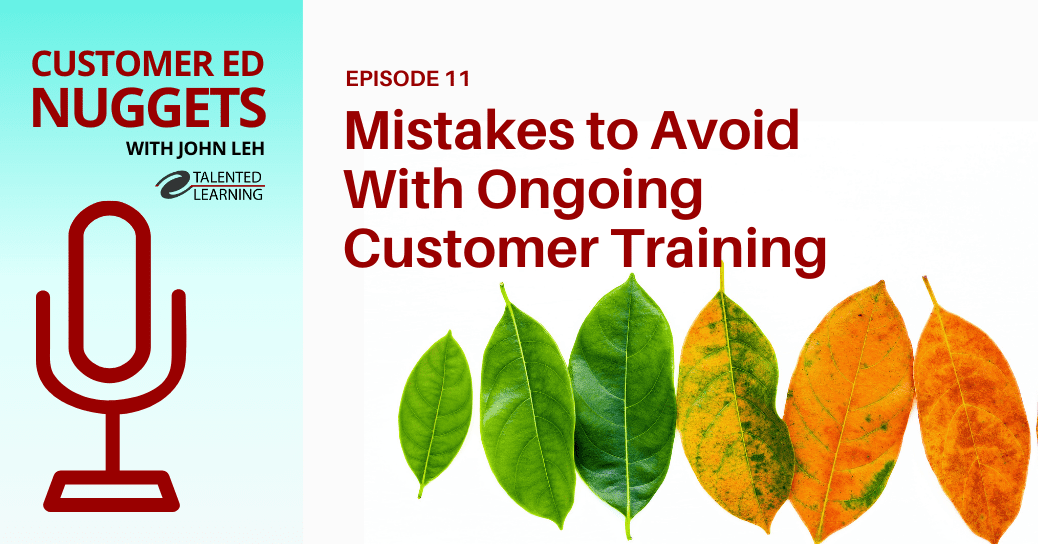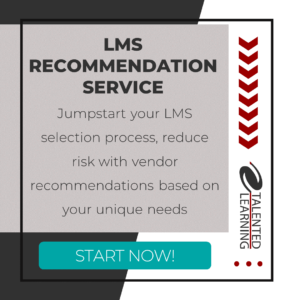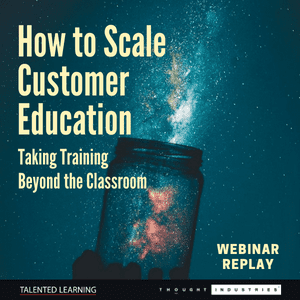
Do you sell learning content online? If you don’t, chances are you will soon. And if you already offer online courses, you’re probably looking for ways to expand this line of business.
Why Are Online Courses So Attractive?
What’s driving new interest in digital learning? It’s not just for universities and commercial training companies anymore. It’s a smart strategy that connects you with your customers and others in your sphere of influence.
Corporations, associations, public institutions – as well as solopreneurs and subject matter experts who’ve never designed or delivered training in their lives – all are creating and selling online content at an unprecedented pace.
Topics for online courses span every conceivable subject, from cooking to tree farming and from graphic design to rocket science.
Intended learning audiences are also just as diverse, including students, toddlers (or their parents), hobby enthusiasts, special interest groups, individuals seeking personal or professional development, and the general public.
Content quality also runs the gamut, from basic page-turners to deeply immersive virtual reality. And of course, content costs range from free to ridiculously expensive, with learning experiences that are awesome, terrible or anywhere in between. (However, the cost of online training content does not always correlate with its quality.)
Online training sellers can market content directly to their target audience or to organizations with a large base of potential learners. For example, if you develop continuing medical education (CME) content, you can market it to individual doctors, to health systems with many doctors on staff, to associations that serve clinicians – or all three.
Not surprisingly, with such a diverse spectrum of business opportunities, and with so much ongoing digital innovation, support for commercial training content providers is the most rapidly evolving segment in the learning technology space.
Which learning system is best for you? Check the 2024 RightFit Solution Grid, based on our team’s independent research! Learn more and get your free copy!
Online Courses: Why Bother With an LMS?
Typically, training providers rely on a Learning Management System (LMS) to bring learners and content together and to facilitate online sales. However, because LMSs were originally developed for employee training or academic use, ecommerce functionality has historically been considered an “add-on.”
The functionality needed to coordinate and deliver mandatory student and employee education is vastly different from the tools that attract voluntary learners and persuade them to pay for training. But until recently, the gap between “mandatory” and “volunteer” LMS use has been considered a problem that LMS buyers must solve separately, through marketing tactics, brand integration, ecommerce tools, creativity and luck.
In the past, LMS vendors were staffed primarily with instructional experts who focused on challenges like the possibility of achieving Kirkpatrick Level 4 capabilities. They rarely included business or marketing experts who understand how learning technology and business strategies work in tandem to build thought leadership, drive brand engagement and develop customer relationships that sell more content.
Today there are LMSs designed specifically with this goal in mind. They are developed by people devoted to helping companies grow by addressing a well-defined market need with compelling learning content that people want to purchase and use.
If this is your goal, your first priority should be to find a learning solution that supports your buyers’ ecommerce needs. There are hundreds of LMS solutions with ecommerce capabilities, so narrowing the field from this diverse list can be confusing and time-consuming.
Your best bet is to outline your ideal use cases and select a short list of vendors who satisfy those requirements.
Which LMS is Best for ECommerce? Three Levels of Support
1) Selling Online Courses Directly to Individuals
In terms of technical sophistication, the simplest form of LMS support for online training involves selling courses directly to learners (also known as Business-to-Consumer or B2C).
LMS platforms with ecommerce capabilities typically meet these requirements because the feature set is similar to those in standard online storefronts. At a minimum, you should expect the following features:
- Ability to browse content catalog before account set-up or log-in
- Delivery of learning content in any media format – standalone or bundled
- Support for selling physical products (books and other tangibles)
- Content reviews and ratings
- Coupons, promotions, discounts
- Shopping cart, checkout and payment gateway integration for credit card authorization
- Immediate access to purchased content
- Recurring and automated billing
- Financial reporting, sales analysis and reconciliation reporting
- Integration with Salesforce.com or other customer relationship management (CRM) platform
Want a better way to manage the business of learning? Find vendor profiles, reviews, case studies and more in our free Learning Systems Directory…
2) Selling Online Courses Through Organizations
The next layer of LMS ecommerce sophistication is the ability to sell and/or support customers within organizations of all types (also known as Business-to-Business or B2B).
For example, if a hospital buys a continuing medical education course for 100 doctors, how will doctors become aware of the course, find it in the LMS and consume the content? Will they need a username and password?
To further complicate matters, let’s assume “commerce” transactions occur in one of several ways:
1) Directly within the LMS
2) In an external clinical system, and then passed to the LMS via API integration, or
3) Offline, through sales representatives
These different sales scenarios translate into different LMS requirements. Typical B2B LMS ecommerce features include:
- Bulk purchase of content online
- Credit account – organizations are invoiced after content is consumed
- Prepaid debit account – organizations pay for content upfront and account depletes as content is consumed
- Upload a file of learner identities and user names to create accounts and assign content
- Tokens (registration codes, enrollment keys and/or vouchers) are purchased in bulk and distributed to a learner for one-time use or use over a predetermined time interval or per course. They can also be used for access to the LMS or content on a per-organization basis. In this case, the hospital could give 100 doctors a single code that provides direct access to the LMS and the purchased course
- Bulk purchase discounts (buy two for $X, 10 for $Y)
- Subscriptions – timed access to content (expires in 30, 300 or X days)
- Integration with Higher Logic community software or an AMS
- Delegated client-level administration and reporting
3) Selling Online Courses to Multiple Markets Through Multiple Channels
Smart training providers don’t put all their eggs in one basket. They diversify income streams from across a content business portfolio.
Analyzing performance, efficiency and profitability of these various streams helps guide the way for future expansion. The most sophisticated ecommerce-enabled LMS platforms recognize this need and respond with appropriate capabilities.
For example:
- Ability to sell a mix of content to any combination of individuals and organizations
- Client-specific portals with relevant content and branding
- Branding and sponsorship functionality for courses, libraries, various topics of interest and learning paths
- Multi-dimensional pricing strategies, packaging, bundles, subscriptions and memberships based on competitive issues and opportunities
- Global commerce and tax management
- Support for affiliates and other partners who want to resell content to their customers
- Remote SCORM packages that deploy content on a business customer’s existing LMS
- Integration with email marketing, CRM, social media, Google Ads and other cloud-based business applications
Conclusion
There’s good news and bad news for online training content companies (and those who want to enter this market). The good news? Anyone can create and sell online course content now. The bad news: Anyone can create and sell online content now.
Competition is fierce for every segment of the learning-related content world. And the landscape is getting more crowded every day.
Using an employee-focused LMS to fuel commercial training is akin to racing a minivan. And it’s no longer enough just to offer a public content catalog and a simple shopping cart.
If your organization wants to sell more and wants to sell more profitably, you need a coherent, thoughtful business strategy – along with a learning platform designed for today’s relentless anytime, anywhere, any device ecommerce demands.
Thanks for reading!
Need Proven LMS Selection Guidance?
Looking for a learning platform that truly fits your organization’s needs? We’re here to help!
Submit the form below to schedule a free preliminary consultation with our Lead Analyst, John Leh:
Share This Post
Related Posts
The Future of Customer Education: Customer Ed Nugget 16
Customer education is rapidly evolving as organizations embrace new strategies and tech. What does this mean for the future of customer education? See what experts say on this Customer Ed Nuggets episode
Education Strategy Mistakes to Avoid: Customer Ed Nugget 15
What does it take to deliver a successful customer education program? It starts with a solid education strategy. Learn how to avoid common pitfalls on this Customer Ed Nuggets episode
Which LMS is Best for You? New Shortlisting Tool for 2024
How can you find the best learning system for your business? Our LMS shortlisting tool can help. Learn about the 2024 RightFit Solution Grid. Free, reliable guidance based on our independent research
How to Build a Learning-Based Business: Executive Q&A Notes
Building and selling online courses may seem easy, but building a profitable learning-based business is far more complex. Find out what successful leaders say about running this kind of business
The Rewards of Community Building: Customer Ed Nugget 14
What role does community play in your customer relationships? Find out why community building is such a powerful force in customer education on this Customer Ed Nuggets episode
Benefits of Training Content Syndication: Customer Ed Nugget 13
If you educate customers online, why should you consider content syndication? Discover 10 compelling business benefits in this Customer Ed Nuggets episode
Top Marketing Skills to Master: Customer Ed Nugget 12
Successful customer education programs depend on professionals with expertise in multiple disciplines. Which marketing skills lead to the best results?
How to Measure and Improve Partner Training ROI
An educated channel is a successful channel. But how do you know if your educational programs are effective? Learn from an expert how to evaluate partner training ROI
Mistakes in Ongoing Customer Training: Customer Ed Nugget 11
Customer education doesn't stop with onboarding. It pays to invest in ongoing customer training. Learn which mistakes to avoid in this Customer Ed Nuggets episode














FOLLOW US ON SOCIAL